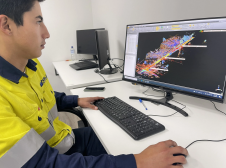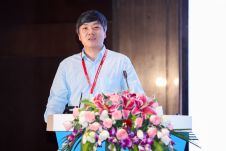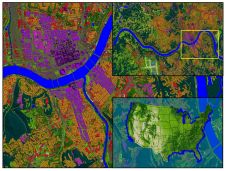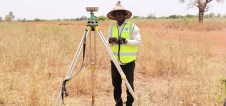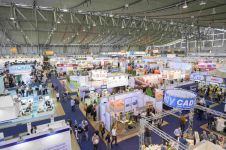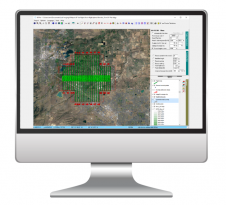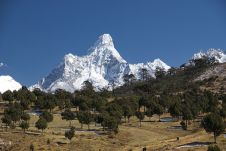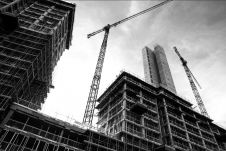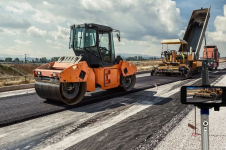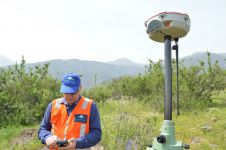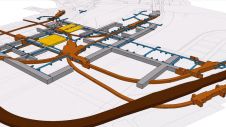Recovery from Disaster in Christchurch - FIG Working Week 2016
This article was originally published inGeomatics World.
Veteran land surveyor Gordon Andreassend, provides a half-century overview of FIG in Hong Kong, and his visit to the FIG Working Week in Christchurch New Zealand.
The privilege of staging the 2016 working week conference was given to the New Zealand Institute of Surveyors (NZIS) several years ago. At that time Christchurch was still reeling under the impact of a series of earthquakes in 2010 and 2011, with the tragic 6.3 Richter Scale shake of 22 February 2011, resulting in heavy loss of life and extensive damage to the city centre and a number of suburbs.
New Zealand’s second largest city, Christchurch, was chosen as the venue, and the theme for the congress, Recovery from Disaster, was adopted by the NZIS conference organisers. This was indeed appropriate, and delegates were able to see that recovery in progress every day, as they travelled to the conference venue. The congress organisers provided a free shuttle service of buses to and from the venue, running from city centre hotels, at regular intervals.
The Conference Venue
The venue, located approximately 4km from the central business district, is about 15 years old, and was constructed predominantly to cater for large sporting events. Fortunately, it escaped structural damage during the catastrophic 2010 and 2011 earthquakes. In 2014 it came under new management and was given the name Horncastle Arena.
It has the capacity to host large conferences and met the working week’s requirements in accommodating the major functions and the plenary sessions, together with the technical exhibition, in the main Arena venue. The majority of the presented papers and various meetings were held in an adjacent building, a fifty metre walk away.
Delegates
克赖斯特彻奇举办约600名代表from 65 counties during the working week, and there were another 250 attendees from New Zealand. These numbers included 78 international Young Surveyors, and 29 from New Zealand. There were special sessions during the event where the Young Surveyors could meet and discuss matters relevant to the profession.
Technical Sessions
The all-important presentation of technical papers, related to the various commissions, were held in parallel sessions over the three main days of the conference. Some 250 papers were presented in the course of 86 sessions. During the course of the week, there were also workshops and other working group meetings and presentations.
Technical Tours
Several technical tours were arranged to enable delegates to understand the role played by the NZ government surveyors, Christchurch local surveyors, and the several firms of professional surveyors engaged in the reconstruction of the city.
I was fortunate enough to be taken on a tour of some of the earthquake-damaged areas by an old surveyor friend who has lived in Christchurch for about 20 years. He told me that he would show me the ‘Christchurch Serengeti’. There were once about 3,000 houses in the area we visited that had to be abandoned, with all structures totally removed due to liquefaction of the terrain. The roads are still there, and many trees, including fruit trees that had been growing in the suburban gardens are flourishing. ‘Serengeti’ indeed!
我想起了演讲者的言语of the ww historical sessions, where he spoke of a large tract of land in South America that had experienced liquefaction following an earthquake. He said that the process was the exact opposite of the usual development of open space for housing construction. In this case, fully developed areas were cleared completely, leaving large tracts of land covered only by vegetation. This is identical to the Christchurch situation today, and it leaves the NZ authorities in a quandary as exactly how to deal with the land, which predominantly consisted of registered, guaranteed title allotments. Compensation and conversion to a parkland would probably be best.
Plenary Sessions
There were three plenary sessions. The first was held after the opening ceremony, with speakers from the host city discussing the impact of the earthquakes on the city and its citizens. On the theme of Recovery from Disaster other speakers detailed the steps that had been taken to effect recovery.
The second plenary included speeches from overseas experts who provided an international perspective of the requirements needed to deal with natural disasters. The third had several speakers with a professional background in surveying, discussing topics related to disaster response and the role of the surveying profession.
The Final General Assembly
On Friday 5 May, the General Assembly was held to announce developments that had taken place during the conference, and to give details of changes in the FIG organization, such as the election of two new vice presidents, Messrs Michael Lilje and Orhan Ercah.
It was also the time to announce the results of the country to host the 2020 working week. There had been a tight contest between Switzerland and the Netherlands, and it was won by the Dutch. See you in Amsterdam in 2020 then!
This article was published in Geomatics World July/August 2016
Make your inbox more interesting.Add some geo.
Keep abreast of news, developments and technological advancement in the geomatics industry.
Sign up for free

